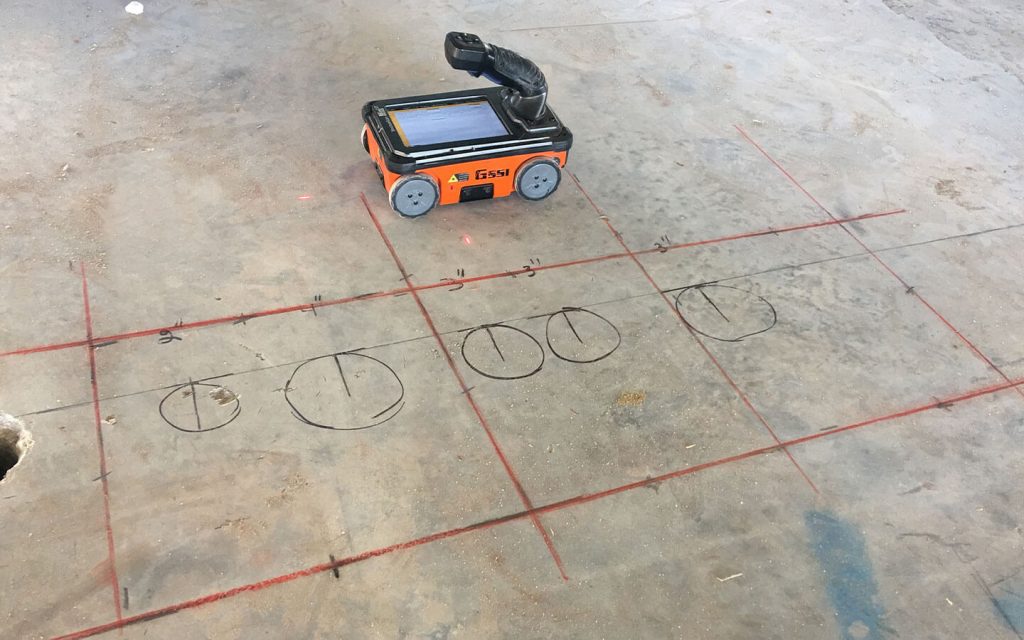Comprehensive Guide to Concrete Scanning Technologies
Comprehensive Guide to Concrete Scanning Technologies
Blog Article
Beyond the Surface Area: Leveraging Advanced Concrete Scanning Techniques for Unmatched Precision and Insight
Advanced concrete scanning strategies have actually arised as crucial devices in this search, using a glance under the surface area to introduce a globe of vital understandings. By using cutting-edge modern technologies, experts can uncover abnormalities, assess the problem of concrete structures, and make informed decisions that form the program of jobs.
Value of Advanced Concrete Scanning
The importance of utilizing advanced concrete scanning techniques hinges on the unmatched precision they provide for finding sub-surface abnormalities and guaranteeing architectural integrity. By utilizing sophisticated modern technologies such as ground-penetrating radar (GPR), electromagnetic induction, and progressed finder imaging, building and construction specialists can dive beneath the surface of concrete structures with a level of accuracy that far goes beyond conventional inspection techniques. Concrete Scanning. These strategies enable the identification of covert risks like rebar corrosion, gaps, conduits, or post-tension cables that might jeopardize the stability and safety and security of a framework over time
Moreover, progressed concrete scanning provides indispensable understandings into the total condition of a concrete component without the requirement for invasive procedures, reducing the danger of causing damages throughout the evaluation process. The ability to pinpoint the precise area and deepness of possible concerns permits targeted repair work and maintenance, eventually lengthening the life expectancy of the structure and optimizing its efficiency. Fundamentally, the importance of sophisticated concrete scanning can not be overstated in the world of building and framework maintenance, where accuracy and reliability are vital.
Sorts Of Cutting-Edge Technologies

Abnormalities and Issue Detection

In addition to GPR, concrete scanning techniques like thermography and impact-echo testing are additionally reliable in spotting defects and anomalies. Thermography makes use of infrared modern technology to determine variations in surface temperature, showing potential areas of worry such as delamination or dampness ingress. On the other hand, impact-echo testing includes examining acoustic responses to detect voids, fractures, and other issues within the concrete. By leveraging these sophisticated techniques, experts can proactively address structural concerns, making certain the long life and safety and security of concrete frameworks.
Assessing Concrete Condition
How can engineers accurately assess the condition of concrete structures to ensure their longevity and security? Examining the concrete problem is a vital facet of keeping framework stability. Different advanced concrete scanning methods are utilized for this function. Ground-penetrating radar (GPR) is frequently utilized to evaluate the inner structure of concrete, discovering spaces, fractures, and other abnormalities that recommended you read may jeopardize its stamina. Furthermore, impact-echo testing can offer understandings right into the thickness and integrity of concrete aspects. Ultrasonic pulse velocity screening is one more important method for assessing concrete quality by gauging the rate of acoustic waves with the product.
Incorporating non-destructive testing methods with visual inspections allows for a detailed evaluation of browse around this site concrete problem, enabling engineers to recognize possible issues early on and execute timely maintenance or fixings. By leveraging these advanced methods, designers can ensure the long-lasting toughness and safety and security of concrete frameworks.
Enhancing Decision-Making Processes
In the realm of framework management, enhancing decision-making processes is critical for guaranteeing the efficient maintenance and durability of concrete frameworks. Improved decision-making processes in concrete administration include using sophisticated scanning techniques to collect in-depth data on the problem of frameworks. By leveraging technologies such as ground-penetrating radar and 3D imaging, stakeholders can make enlightened choices concerning support, substitute, or repair work strategies.
These progressed scanning strategies offer vital insights right into the internal composition of concrete, recognizing possible concerns such as voids, fractures, or deterioration that might not show up on the surface area. This level of in-depth information enables positive upkeep planning, reducing the danger of architectural failures and raising the overall life expectancy of concrete frameworks.
Additionally, by including electronic documents and evaluation devices right into the decision-making procedure, stakeholders can track the evolution of concrete conditions over time, allowing predictive maintenance methods and maximizing source allocation. Ultimately, the combination of innovative page concrete scanning techniques enhances decision-making processes by supplying unparalleled accuracy, insight, and effectiveness in framework management.
Verdict
Finally, advanced concrete scanning methods provide unparalleled accuracy and understanding in spotting anomalies, defects, and examining the problem of concrete frameworks. By leveraging cutting-edge technologies, decision-making processes can be improved, leading to even more informed and efficient services for keeping and repairing concrete facilities. These strategies play a crucial role in guaranteeing the safety and durability of concrete structures, making them a crucial tool in the area of building and design.
Moreover, advanced concrete scanning provides important insights into the total problem of a concrete component without the need for intrusive actions, minimizing the threat of creating damage during the assessment process - Concrete Scanning. One more cutting-edge modern technology is 3D X-ray scanning, which gives detailed pictures of the internal framework of concrete, providing beneficial info without the need for harmful testing. In Addition, Concrete Cover Meters are utilized to gauge the density of concrete cover over reinforcement bars properly. Boosted decision-making processes in concrete management include utilizing innovative scanning methods to gather in-depth data on the condition of frameworks.In conclusion, progressed concrete scanning methods provide exceptional precision and understanding in discovering abnormalities, flaws, and assessing the problem of concrete frameworks
Report this page